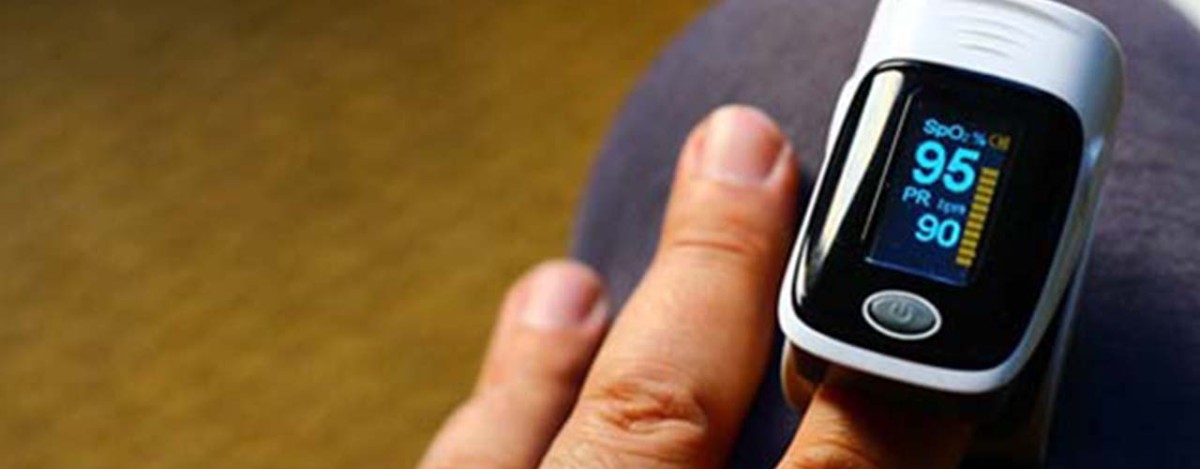
Since mid-November, the West of England AHSN has been supporting our three STP systems with the rapid implementation of the COVID Oximetry @home service (a step up pathway) to help detect the early signs of deterioration in patients with confirmed or suspected COVID-19. More recently, since mid-January, COVID Virtual Wards (‘step-down’ pathways to help enable people in hospital with COVID-related illness to return home safely as soon as possible) are also being rolled out across the region.
By working collaboratively, over 2000 patients (figure updated May 2021) have now been supported by these programmes across the region.
Both of the pathways feature enhanced monitoring for patients with a confirmed COVID case – pulse oximeters are used by the patient to identify ‘silent hypoxia’ (a reduction in oxygen levels in the blood with no other obvious clinical signs). These services built on learning from the first wave of the COVID-19 pandemic and make use of clear escalation pathways based on the person’s oxygen saturation levels in the blood (which are known as sats).
The West of England AHSN has provided a supportive role to our three STP systems, helping drive collaboration within, and across, each region with over 1500 patients having been supported across the step up service (COVID Oximetry @home) and over 100 patients on the step down service (COVID Virtual Ward) thus far.
Crucially for patient safety, these services were demonstrated to reduce mortality, reduce inappropriate hospital admissions (findings also suggest monitoring sats allows patients to be admitted to hospital before they have severely deteriorated), reduce the length of hospital admissions and escalation to intensive care wards.
Both COVID pathways have been fast-paced implementations of new services, largely from a standing start, with most systems in our region rapidly launching the pathways within a few weeks of the publication of national guidance from NHS England.
Hein Le Roux, Joint Clinical Lead for Gloucestershire CO@H, also Clinical Lead West of England AHSN, and GP at Churchdown, said:
“The COVID Oximetry @Home service has had a real impact on my patients who have developed COVID. In Gloucestershire, over 1100 patients have been referred to the service and for the majority it has provided reassurance that they have not developed the potentially fatal silent hypoxia. For the few people who did deteriorate, we were able to identify them early and prioritise their care with steroids and oxygen in the hospital setting.
This has meant they were less unwell prior to receiving treatment and have thus recovered more quickly. It has also shown that by working together as a care system between primary care, the COVID Oximetry @Home service, South Western Ambulance Service NHS Foundation Trust and our acute colleagues, we have improved patient care”.
Michelle Reader, Chief Operating Officer from Medvivo said:
“The Medvivo-provided oximetry monitoring services are a testament to the collaborative and system-wide approach that was taken across BaNES, Swindon and Wiltshire (BSW). Once we’d offered to provide the service for the region we felt really supported by colleagues in commissioning, primary care, secondary care, community services and the AHSN. This allowed these services to be established very quickly, enabling us to provide valuable supportive services to the people of BSW.
The sharing of learning from other areas was really important. I’ve never been part of such a rapid system-wide collaboration, and there was a real ‘can do attitude’ from all involved. It’s been a learning process and we continue to learn and develop the service. The feedback from the patients has been fantastic – this makes all the efforts worthwhile.”
To find out more about COVID Oximetry @home and COVID Virtual Wards, including implementation packs and recorded webinars, please visit our dedicated COVID-19 webpages.
The below case study demonstrates the impact of the COVID Oximetry @home pathway through the story of one patient who we will call John*:
- Day 1 – John is a 57 year old gentlemen who has developed cough and fever.
- Day 2 – John takes a COVID test
- Day 3 – John receives a positive COVID test result. John’s GP contacts him and he is placed in ‘at risk group’ for silent hypoxia & deterioration. John is referred to the COVID Oximetry @Home (step up care pathway) and provided with pulse oximeter.
- Day 4 – John receives advice on how to use the service for daily monitoring of blood oxygen saturations through a digital monitoring platform. John’s sats are recorded at 95%.
- Day 7 – John’s sats are now 91% (this is now in the parameter of silent hypoxia). John is contacted by the service provider where he advises he is feeling ‘okay’. John’s advised to call 999 urgently for hospital assessment and possible treatment.
- Day 7 to 10 – John is admitted to hospital and given dexamethasone and oxygen. John’s sats gradually improve over the next three days.
- Day 10 – John is discharged home after four days in hospital. John is now monitored on the COVID Virtual Ward (step down pathway).
- Day 13 – John has made steady progress and is discharged from the COVID Virtual Ward service and sign posted to Long-COVID pathway & given safety netting information.
Without the COVID Oximetry @home service and use of a pulse oximeter, John may not have known he was significantly unwell and could have required more extensive hospital treatment, or potentially even died. These services have not only a positive impact for the patient but the positive impacts are seen across primary and secondary care.
*John is not the patient’s real name.
Posted on February 24, 2021


